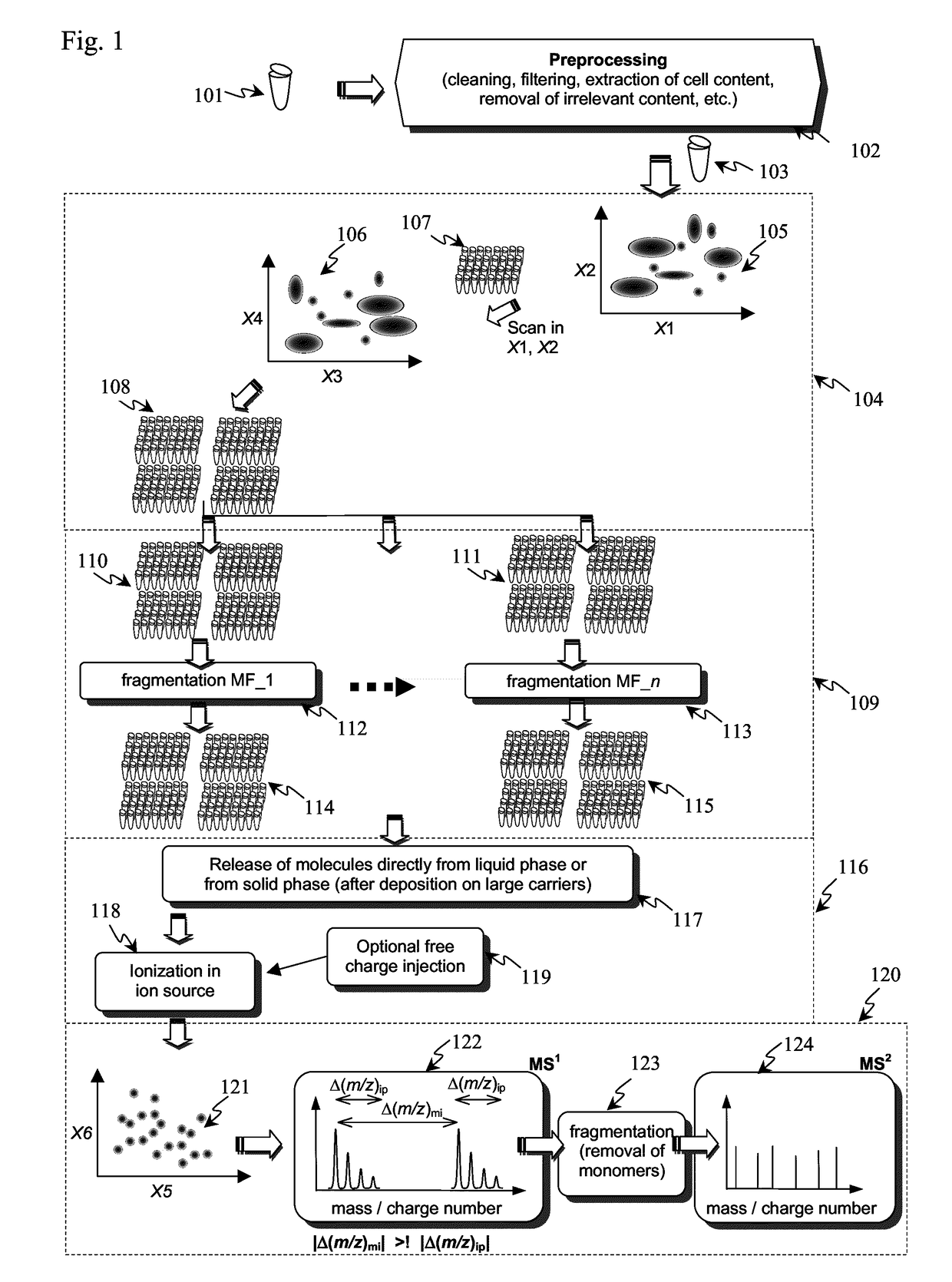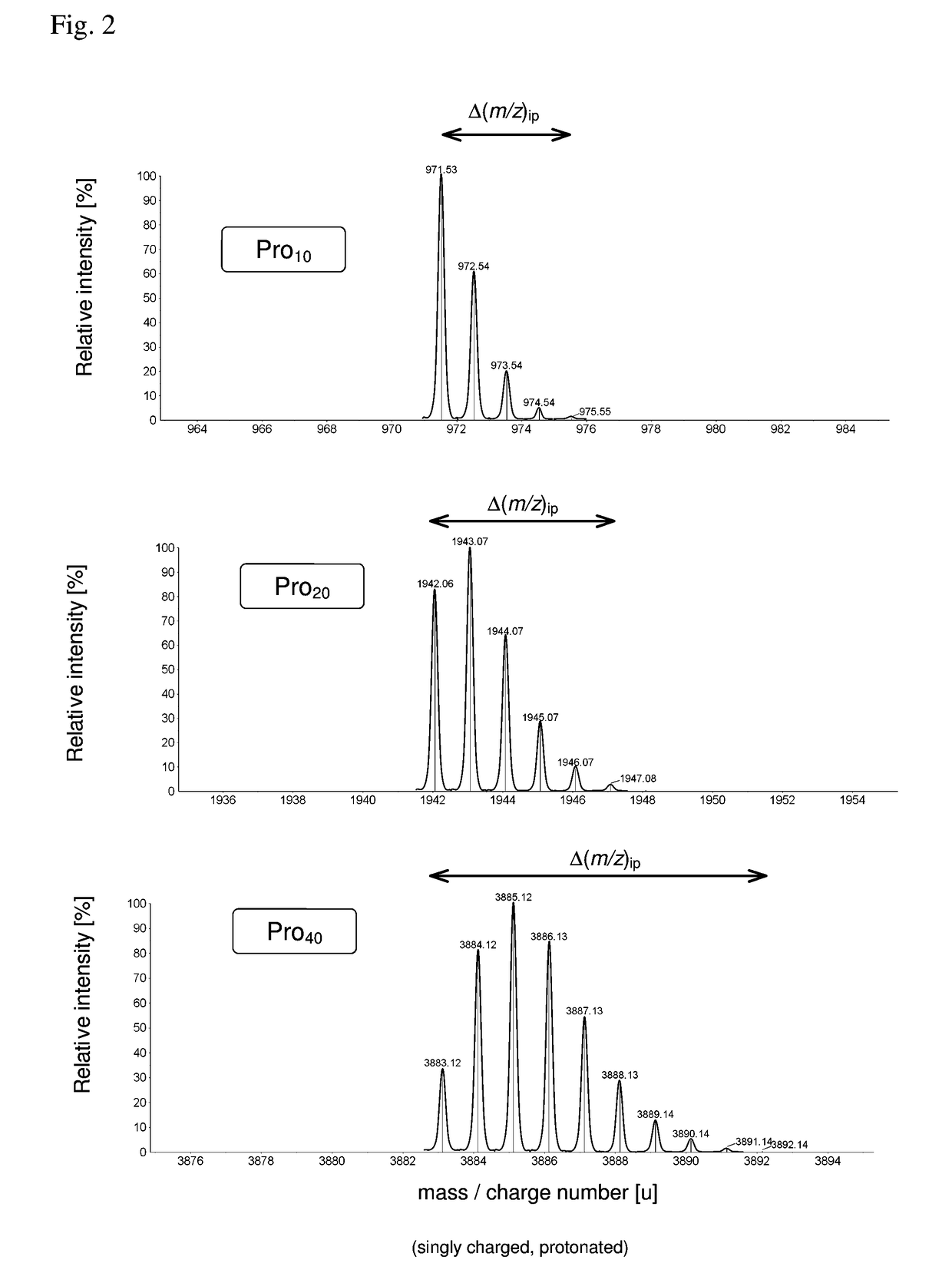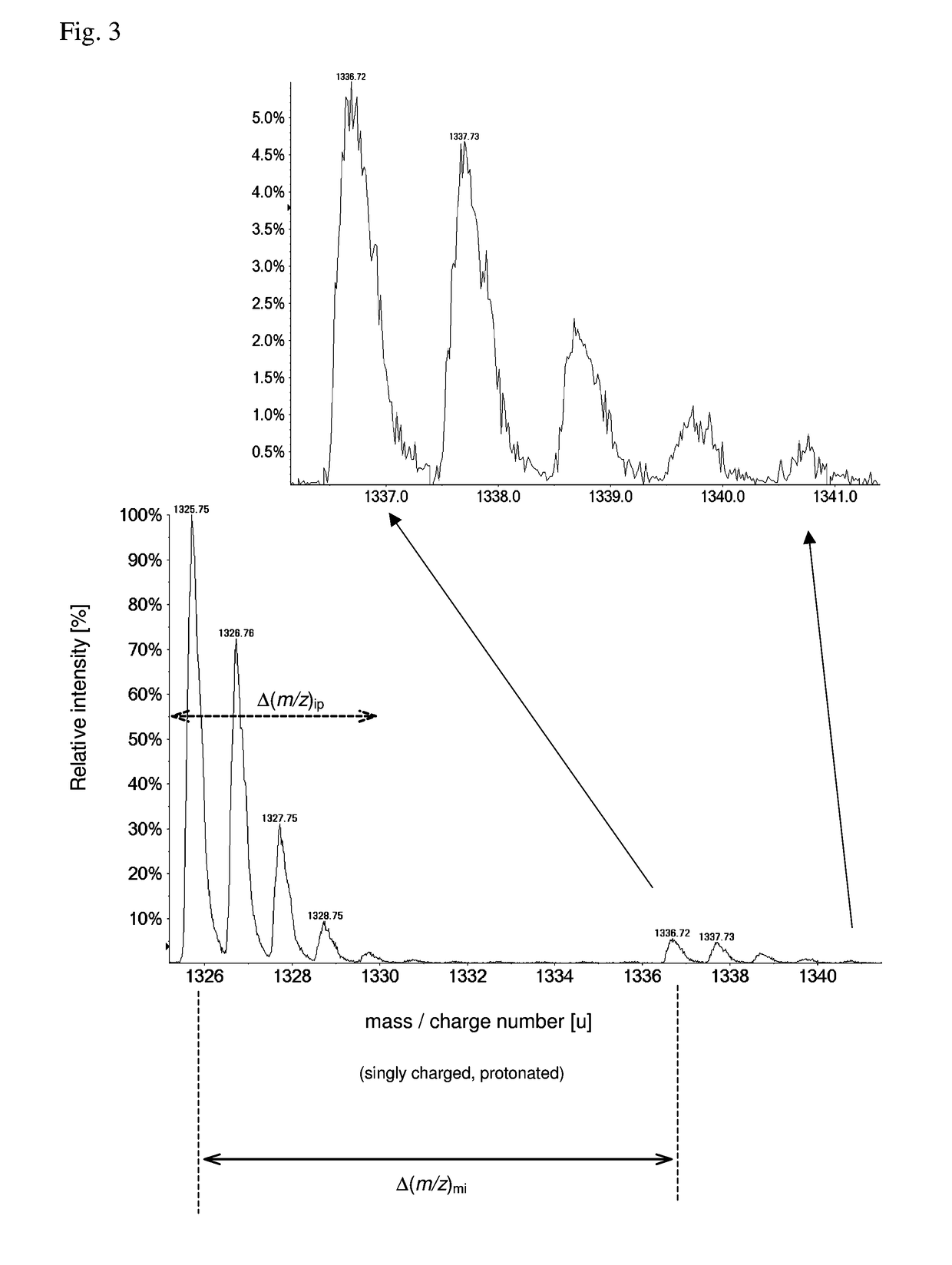Rigorous method and apparatuses for the analysis of complex mixtures of organic molecules with an enhanced degree of information extraction
a technology of information extraction and complex mixtures, applied in biochemistry apparatus and processes, instruments, detection of post translational modifications, etc., can solve the problems of many of the aforementioned breakthroughs as well as other inventions having “a difficult birth”, slow heretofore, and few outsiders being aware of the limitations inherent in the analysis of dna
- Summary
- Abstract
- Description
- Claims
- Application Information
AI Technical Summary
Benefits of technology
Problems solved by technology
Method used
Image
Examples
Embodiment Construction
[0086]As pointed out, the detection and identification of peptides and proteins faces one decisive problem: In contrast to DNA, there is no equivalent of PCR for proteins, i.e., proteins cannot be amplified chemically. Furthermore, proteins are more complex from a combinatorial standpoint (20 amino acids vs. 4 nucleic acids). This means that the sensitivity (and as a related parameter speed) has to come exclusively from the physical measurement.
[0087]In principle, it is possible to determine the amino acid sequence of a (small) protein purely by chemical and separation means, i.e., Edman degradation (1950) and Bergmann degradation (1932). In fact, the first full sequence of a protein was determined long before the first gene was sequenced: Frederick Sanger sequenced bovine insulin in two steps in 1951 and 1952 (Sanger, Nobel lecture 1958), whereas the first genome (of bacteriophage Phi X 174) was obtained in 1977, also by Sanger (Sager et al., 1977). However, such methods to identif...
PUM
| Property | Measurement | Unit |
|---|---|---|
| surface area | aaaaa | aaaaa |
| atomic mass | aaaaa | aaaaa |
| molecular mass-to-charge ratios | aaaaa | aaaaa |
Abstract
Description
Claims
Application Information
 Login to View More
Login to View More - R&D
- Intellectual Property
- Life Sciences
- Materials
- Tech Scout
- Unparalleled Data Quality
- Higher Quality Content
- 60% Fewer Hallucinations
Browse by: Latest US Patents, China's latest patents, Technical Efficacy Thesaurus, Application Domain, Technology Topic, Popular Technical Reports.
© 2025 PatSnap. All rights reserved.Legal|Privacy policy|Modern Slavery Act Transparency Statement|Sitemap|About US| Contact US: help@patsnap.com



